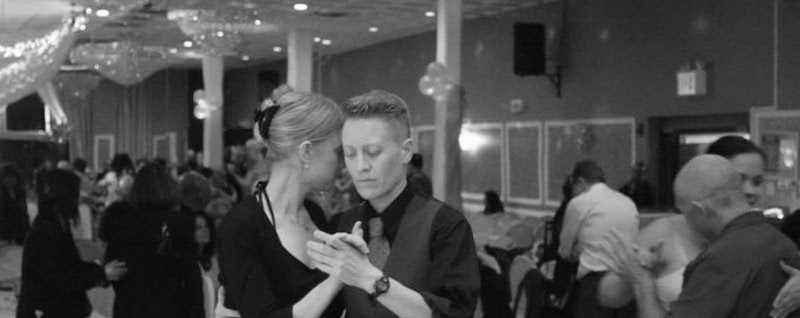You have probably seen rehearsed, choreographed, ballroom-style tango moves on shows like Dancing with the Stars. What most people do not know is that those performances have very little in common with Argentine tango as it is danced socially in Argentina and around the world. Social tango dancing almost never includes the kinds of over the top moves you have seen on television. Argentine tango is a very grounded, connected, improvisational, and somewhat intellectual dance. It takes years to learn, and the tango community likewise has special codes of conduct for both dancing and how to comport oneself at the dance venue.
The complexity of tango and the tango scene is what makes for such a rewarding lifelong endeavor. But this complexity also presents many barriers to entry. While I've been studying and dancing Argentine tango since 2014, both locally and on urban scenes including Chicago and NYC, I am not the most expert dancer. What I offer is feminist, body-positive tango instruction that is sensitive to queer cultures and identities. I offer lessons for beginner- and intermediate-level individuals, couples, and groups. While I may review rote steps, I focus on kinesthetics. Understanding how you and your dance partner move, what happens during a step, a weight shift, a pivot, is far more important than memorizing the 8-count basic. I also familiarize students with the codigos they will encounter once they start attending milongas. My goal for students is to increase their technique and fluency so that they can enjoy the queer and straight tango scenes.
When we grow up queer, we often learn that our most natural postures and movements are not culturally acceptable. Or that our bodies are not what we wanted them to be. As a result of trying to move in more culturally acceptable ways, or trying to hide parts of our bodies with which we aren't comfortable, we sometimes end up with habits that are bad for our posture and interfere with graceful, powerful movement. Tango demands good posture and balance, and you may find that it challenges bad habits that have become part of your embodiment of queerness or of gender. But this doesn't have to be a bad thing. In fact, it is a rare opportunity to increase the health and mobility of your already authentic embodiment.
Contact Lou